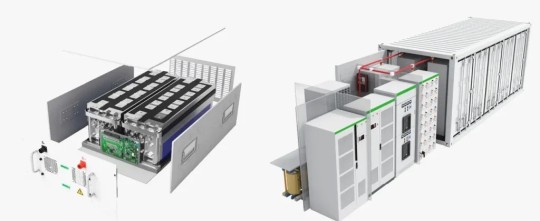Text
Empowering Tomorrow: Navigating the Green Frontier with Battery Energy Storage Systems and Innovative Manufacturers

In the ever-evolving landscape of sustainable energy, Battery Energy Storage Systems (BESS) stand as a cornerstone, ushering in a new era of efficiency and resilience. As we embark on a journey through the green frontier of energy storage, the narrative unfolds not only with the capabilities of BESS but also with the visionary guidance of battery energy storage system manufacturers.
Innovation at the Core: At the heart of the energy revolution lies the ceaseless innovation driven by battery energy storage system manufacturers. These pioneers not only engineer cutting-edge solutions but constantly redefine the boundaries of what's possible. Their commitment to innovation is not merely a feature; it's a testament to an unwavering dedication to sculpting a sustainable energy future.
Versatility Tailored for All: In a world where energy needs vary across sectors, the adaptability of BESS, skillfully crafted by manufacturers, shines brightly. These systems seamlessly integrate into diverse environments, from powering homes with renewable sources to bolstering industrial operations. This versatility isn't happenstance; it's a deliberate design philosophy, reflecting manufacturers' foresight in creating solutions tailored for a spectrum of energy demands.
Harmony with Nature's Cadence: Battery energy storage systems, under the stewardship of visionary manufacturers, resonate with the natural cadence of energy production and consumption. These systems capture and store excess energy when nature is most generous, ensuring a harmonious interplay between human needs and environmental sustainability. The result is an energy storage model that mirrors the ebb and flow of the natural world.
Grid Resilience, Realized: The need for grid resilience has never been more pronounced, and BESS, guided by manufacturers, emerges as a key player in this narrative. These systems, equipped with real-time response capabilities, fortify our grids against disruptions, showcasing a level of resilience that echoes the forward-thinking strategies of manufacturers in anticipating and addressing the challenges of an evolving energy landscape.
Global Impact, Local Solutions: Beyond technological marvels, battery energy storage system manufacturers contribute to a global shift towards sustainable practices. Their commitment ripples across borders, influencing communities worldwide. This global impact transforms BESS into a catalyst for positive change on an international scale, turning what was once a local solution into a beacon for global sustainability.
As we navigate the green frontier of energy storage, the synergy between battery energy storage systems and manufacturers becomes the driving force behind a sustainable and electrifying future. This narrative isn't confined to the realm of technology; it's a story of collaboration, innovation, and foresight that resonates with the ethos of a greener tomorrow. In the tapestry of sustainable energy, BESS and their visionary manufacturers weave a narrative that propels us towards a future where power is not just stored but intelligently managed for the benefit of all.
Further reading
2 notes
·
View notes
Text
Basic understanding of battery energy storage system: battery, PCS, BMS

With the increasingly serious global energy crisis and the increasing awareness of environmental protection, energy storage technology has become one of the important means to solve energy problems.
Battery energy storage systems are currently one of the most common and practical energy storage technologies. In the battery energy storage system, the battery, PCS, and BMS are its most basic components. Let’s take a look at these three basic concepts.
Battery
The battery is the core part of the battery energy storage system. It is a device that converts chemical energy into electrical energy. It consists of four parts: positive electrode, negative electrode, electrolyte and separator. There are many types of batteries, the common ones include lead-acid batteries, nickel-metal hydride batteries, lithium-ion batteries, etc. Among them, lithium-ion batteries have become the most commonly used battery type in current battery energy storage systems due to their high energy density, long life, and environmental protection.
PCS
PCS is the core equipment in the battery energy storage system. It is a device that converts the electric energy stored in the battery into AC electric energy and supplies it to the grid or users. PCS mainly consists of inverters, transformers, controllers, etc. Its main function is to convert DC power into AC power, control the input and output of power, and ensure the safety and stability of the system. The performance of PCS directly affects the operating efficiency and service life of the battery energy storage system.
BMS
BMS is the abbreviation of battery management system and is an important part of the battery energy storage system. BMS is mainly composed of monitoring module, control module, communication module and other parts. Its main function is to monitor and control the status of the battery in real time, including battery voltage, current, temperature, SOC and other parameters. At the same time, BMS can also protect and control the battery, such as overcharge, over-discharge, over-current, etc., to ensure the safety and life of the battery.
To sum up, batteries, PCS, and BMS are the three basic components of battery energy storage systems. As the core part, the battery is responsible for storing energy; PCS converts the electric energy stored in the battery into AC electric energy; BMS monitors and protects the battery in real time to ensure the safety and life of the battery. In the design and operation of battery energy storage systems, the coordination of the three is crucial. Only in this way can the efficient, stable and safe operation of the battery energy storage system be achieved.
2 notes
·
View notes